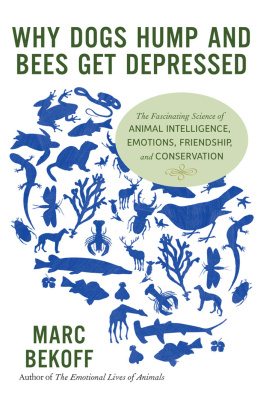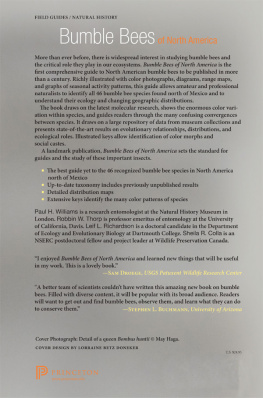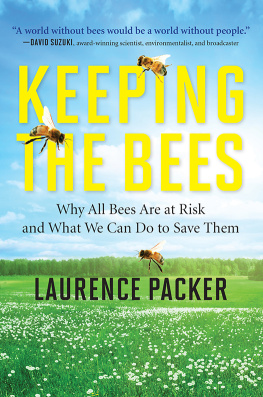Jalil - Beescape for Meliponines: Conservation of Indo-Malayan Stingless Bees
Here you can read online Jalil - Beescape for Meliponines: Conservation of Indo-Malayan Stingless Bees full text of the book (entire story) in english for free. Download pdf and epub, get meaning, cover and reviews about this ebook. year: 2014, publisher: Partridge Publishing Singapore, genre: Romance novel. Description of the work, (preface) as well as reviews are available. Best literature library LitArk.com created for fans of good reading and offers a wide selection of genres:
Romance novel
Science fiction
Adventure
Detective
Science
History
Home and family
Prose
Art
Politics
Computer
Non-fiction
Religion
Business
Children
Humor
Choose a favorite category and find really read worthwhile books. Enjoy immersion in the world of imagination, feel the emotions of the characters or learn something new for yourself, make an fascinating discovery.

- Book:Beescape for Meliponines: Conservation of Indo-Malayan Stingless Bees
- Author:
- Publisher:Partridge Publishing Singapore
- Genre:
- Year:2014
- Rating:4 / 5
- Favourites:Add to favourites
- Your mark:
- 80
- 1
- 2
- 3
- 4
- 5
Beescape for Meliponines: Conservation of Indo-Malayan Stingless Bees: summary, description and annotation
We offer to read an annotation, description, summary or preface (depends on what the author of the book "Beescape for Meliponines: Conservation of Indo-Malayan Stingless Bees" wrote himself). If you haven't found the necessary information about the book — write in the comments, we will try to find it.
Jalil: author's other books
Who wrote Beescape for Meliponines: Conservation of Indo-Malayan Stingless Bees? Find out the surname, the name of the author of the book and a list of all author's works by series.
Beescape for Meliponines: Conservation of Indo-Malayan Stingless Bees — read online for free the complete book (whole text) full work
Below is the text of the book, divided by pages. System saving the place of the last page read, allows you to conveniently read the book "Beescape for Meliponines: Conservation of Indo-Malayan Stingless Bees" online for free, without having to search again every time where you left off. Put a bookmark, and you can go to the page where you finished reading at any time.
Font size:
Interval:
Bookmark:
BEESCAPE
FOR MELIPONINES
CONSERVATION OF INDO-MALAYAN STINGLESS BEES
ABU HASSAN JALIL
IBRAHIM SHUIB M.B., B.S. (MALAYA)
Copyright 2014 Abu Hassan Jalil. All rights reserved.
Library of Congress Control Number: 2014944666
ISBN
978-1-4828-2361-5 (sc)
978-1-4828-2362-2 (e)
All rights reserved. No part of this book may be used or reproduced by any means, graphic, electronic, or mechanical, including photocopying, recording, taping or by any information storage retrieval system without the written permission of the publisher except in the case of brief quotations embodied in critical articles and reviews.
Because of the dynamic nature of the Internet, any web addresses or links contained in this book may have changed since publication and may no longer be valid. The views expressed in this work are solely those of the author and do not necessarily reflect the views of the publisher, and the publisher hereby disclaims any responsibility for them.
Toll Free 800 101 2657 (Singapore)
Toll Free 1 800 81 7340 (Malaysia)
www.partridgepublishing.com/singapore
07/03/2014

CONTENTS
CONSERVATION OF STINGLESS
BEES THROUGH BEE-SCAPE
This book was inspired after the 11 th Asian Apicultural Association Conference in Terengganu, Malaysia, 2012 with many thanks to the following people:
Dato Prof Dr. Makhdir Mardan, Vice President of AAA and Chairman of the organizing committee of the 11 th AAA conference who enlightened me with his conference closing address on the endangerment of the sustainable future of bees.
Prof. Dr. Cleofas R.Cervancia, Vice president of AAA and President APIMONDIA Regional Commission for Asia, who taught me on the importance of pollination and the wonders of flower anthesis.
Prof. Dr. Debra Smith, from University of Kansas, USA, who educated me on the diversity of the Indo-Malayan Stingless Bees during the AAA pre-conference workshops.
Dato Hj. Ismail Ngah, former Director General of the National Landscape Department of Malaysia, who inspired me by showing Malaysia to the world as the only country that, has its own National Landscape Policy.
Dr. Sagathevan Kuppusamy, Head of Science and Engineering Resources, Sunway University, who inspired me with his exploits in taxidermy on some of the fauna (more appropriately National Treasures) of Malaysia.
Special thanks to:
Dr. Hans Bnziger, from Chiang Mai University of Thailand, and Dr. Roy J. Beckemeyer, Editor of Journal of the Kansas Entomological Society for granting me permission for the use of Dr. H.B.s pictures of remarkable Nest entrances
Dr. Claus Rasmussen, from Aarhus University in Denmark, who contributed the Study on Meliponiculture in Peru.
Prof. Dr. Anchalee Sawathum, from Rajamangala University of Technology Thanyaburi, Thailand for literary contributions on Indo-Malayan Stingless Bees in Thailand
Robert Lutrell, of ANBEES group, Australia for literary contributions on Australian Native Stingless bees in Australia
Maria Rosa Bernasconi, of Universidad de la Vida Diaria of Argentina for literary contributions on South American Stingless Bees.
Conservation of Stingless Bees through Bee-scape
The efforts by the authors of this book Conservation of Stingless Bees Through Bee-scape , Mr. Abu Hassan Jalil and Dr Ibrahim Shuib must be commendable as there are not many practitioners of meliponiculture with vast and exhaustive experience in this field within the context of commercial exploitation of the little known stingless bees which have vast business potential as well as environmental diversity and sustenance of the green technology.
From their observation, they have managed to pen down the intricacies and the behavourial nature of these well-mannered creatures such that their lives will not be endangered and simultaneously provide an extensive insight into the development of a more regimented and knowledgeable meliponiculturist. These findings as well as the National Landscape Policies on the beautification of the environment, the etymology of beescape takes root.
It is hoped that this publication would generate more interest nationally and globally and generate a more regimented and knowledgeable practising meliponiculturists as well as future meliponiculturists . In endorsing this endeavour, the Koperasi Meliponi Kuala Lumpur Berhad, a recently formed cooperative body in Malaysia, wish every success to the authors and also to each and every individual and organisation having a common interest of mutual benefit.
MARDZUKI ABDULLAH, FCIS
Chairman
Koperasi Meliponi Kuala Lumpur Berhad
01 MAY 2014
Much has been studied on the pesticide effects on bees, but little has been studied on the impact of the Birds nest industry on the survival of the Indo-Malayan Stingless Bees in South East Asia. How the rapid growth in Major Agricultural land developments are also rapidly decreasing the wild colonies of Stingless Bees. With population explosions comes great development advancements and needs in bigger schools, hospitals and airports. Vast areas are cleared for such requirements.
For every 100 acres, there is an average of 30 bee colonies (personal encounters) that need to be contended with. Major developments involving vast virgin areas for clearing need to look into saving wild bee colonies prior to clearing. These log hives especially can be removed and placed in forest reserves or new Apiaries and Meliponaries established.
This book proposes proper landscaping practices to safeguard, acclimatise and conserve these bees, especially the endemic stingless bee species. We cannot tell predators and insectivorous birds or mammals not to devour the bees but we can tell the bees in unspoken communication by way of planting. As an example, consider the fact that birds usually capture bees above the canopy of trees, we can tell our stingless bees not go where the birds frequent. We do this by planting downward blooming flowers like Syzygiums, low flowering shrubs and beneficial ground covers like Portulacas and Zephyrantes.
We devise all sorts of traps and deterrents at their nests and hives to prevent and reduce predatory activity. From birds nets to Phorid fly traps at the Hive stations but their foraging of apical flowers is much to be desired in terms of birds predation. It may not be so difficult in the case of Palms and coconut trees. Palm tree flowers are favourites of Stingless Bees and are always under the protection of the Palm canopy. The height of these Palm blooms is a great deterrent to frogs and toads. Cleverly designed barriers (attached to the Palm trunks) can obstruct climbing frogs and lizards or chameleons from ambushing the foraging bees.
A well designed floral landscape can also help the bees conserve their flight range energy requirements. Thus, concentrating the bees efforts on regulating hive temperatures, nest building and brood health. Avoiding predating birds and freeing themselves from spider webs are a stressful day in the life of a Stingless Bee. Reducing this stress for them, allows them to pool their efforts into building stronger colonies. Assuming that the bee colonies as a single super organism will require all the help it can get to muster survival in the three dimensional zone of varied and endless predators and dangers.
The sudden surge of beekeepers motivated by the lure of medicinal stingless bee honey has seen a trend of uncontrolled exploitation of jungle resources and cutting down of Meliponine nest host trees. It is not only a plunder but also a disturbance to a natural habitat and a reduction to pollinators of jungle flowers. This potential imbalance has caused wild life like Sun bears to encroach into Meliponaries and eventually human habitat. In the first quarter of 2014 alone, there were four reports of Bear attacks on Meliponaries and an Apiary plus one report on a human in East of Peninsula Malaysia. Whereas, the last known reported case of such a similar attack was about 5 years ago.
Next pageFont size:
Interval:
Bookmark:
Similar books «Beescape for Meliponines: Conservation of Indo-Malayan Stingless Bees»
Look at similar books to Beescape for Meliponines: Conservation of Indo-Malayan Stingless Bees. We have selected literature similar in name and meaning in the hope of providing readers with more options to find new, interesting, not yet read works.
Discussion, reviews of the book Beescape for Meliponines: Conservation of Indo-Malayan Stingless Bees and just readers' own opinions. Leave your comments, write what you think about the work, its meaning or the main characters. Specify what exactly you liked and what you didn't like, and why you think so.








